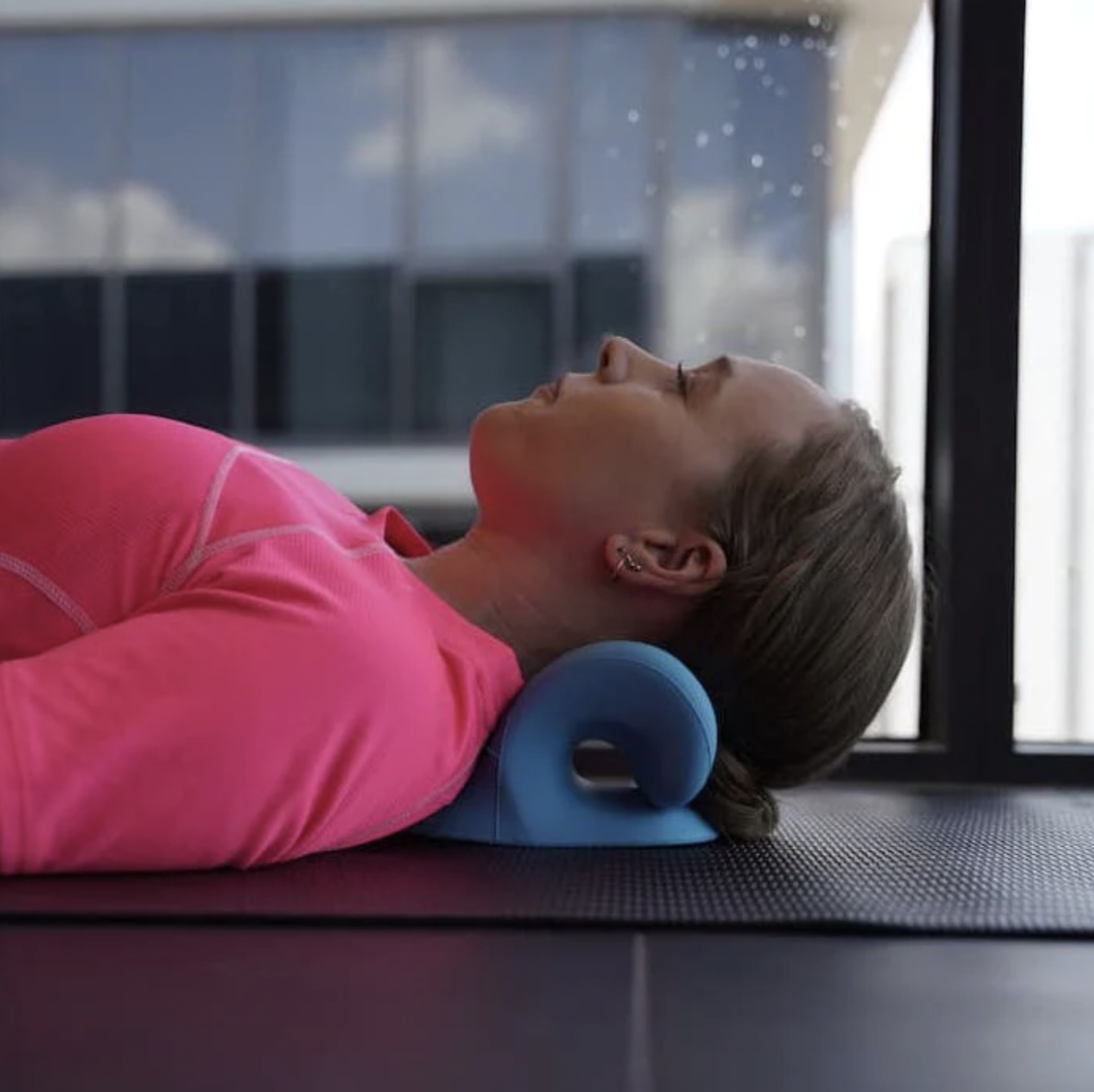Neck Cloud: Ingenious Assistance for Discomfort Relief and Better Pose
Wiki Article
Neck Discomfort in the Workplace: Recognizing Danger Variables and Applying Ergonomic Solutions
Neck discomfort in the office is a prevalent issue that can influence employee health and performance. By recognizing the various danger factors contributing to neck discomfort and executing ergonomic services, companies can develop a more helpful work environment.Typical Root Causes Of Neck Pain
Neck discomfort in the workplace is a widespread concern that can be connected to several usual causes. One of the primary culprits is poor stance, which commonly results from long term periods of resting improperly at a desk or workstation. This can cause strain on the neck muscular tissues and joints, causing discomfort and discomfort. Furthermore, repeated motions such as frequent flexing, twisting, or reaching can additionally add to neck discomfort in time. Stressing the neck by holding it in an uncomfortable position for extensive periods, like nestling the phone in between the ear and shoulder, can worsen the problem (neck cloud).
Ergonomic Threat Factors
Poor functional designs in the workplace can dramatically contribute to neck pain amongst staff members. Variables such as inappropriate desk height, inadequate chair assistance, and awkward positioning of computer system displays can all play a role in the advancement of neck pain. When employees are required to rest for extensive periods in positions that strain their neck muscle mass, it can bring about stiffness, discomfort, and even much more severe musculoskeletal problems in time.Furthermore, bad ergonomic methods can result in staff members taking on awkward stances while functioning, such as craning their necks to see a computer display or reaching annoyingly for a computer mouse or keyboard. neck cloud. These repetitive movements and unnatural positions can put unnecessary anxiety on the neck and surrounding muscular tissues, causing discomfort and lowered productivity

Workdesk Arrangement Recommendations
To minimize the important source danger of neck pain and discomfort, there are several desk setup referrals that employees must think about. Make certain that the computer screen is positioned at eye level to protect against straining the neck by looking up or down.It is also essential to have sufficient lights to lower eye stress, as scrunching up your eyes or leaning forward can lead to neck tension. Organize the workdesk format to keep regularly made use of things within arm's reach, restricting the demand for recurring twisting or reaching motions. By executing these workdesk arrangement recommendations, employees can develop a much more ergonomic office that sustains neck health and minimizes the risk of developing work-related neck discomfort.
Extending and Workout Tips
Simple desk-friendly stretches can aid reduce neck discomfort and protect against stiffness. Neck rolls, shoulder shrugs, and mild side-to-side neck stretches are efficient in easing stress.Establishing tips or using applications that motivate activity can assist develop a normal extending routine. By prioritizing these activities, you can improve your physical well-being, lower the threat of neck pain, and enhance your overall performance in the office.
Significance of Regular Breaks
In a busy job atmosphere where needs can contribute to physical pressures like neck discomfort, establishing a routine that emphasizes the significance of regular breaks is vital. By incorporating brief breaks into the job routine, workers can minimize the risk of creating neck pain and boost overall convenience and productivity.Normal breaks allow staff members to rest their muscular tissues, stretch, and turn, protecting go to the website against rigidity and promoting better circulation. Motivating employees to take brief breaks every 30-60 minutes can help in reducing the build-up of stress in the neck and shoulders. These breaks can likewise work as an opportunity for staff members to practice relaxation methods or gentle neck stretches, additionally promoting musculoskeletal health and wellness. Applying a culture that values and focuses on routine breaks can have a substantial effect on minimizing neck pain and improving general well-being in the workplace.
Verdict
Finally, attending to ergonomic threat factors and implementing correct workstation arrangements are crucial in minimizing neck discomfort in the work environment. By advertising great stance, offering sufficient assistance, and encouraging normal breaks and stretches, organizations can produce a healthier and extra productive workplace for employees. Focusing on employee well-being with ergonomic remedies is crucial to stop discomfort and enhancing general work environment you can try these out fulfillment.Neck discomfort in the workplace is a widespread concern that can affect employee health and efficiency. By identifying and dealing with these common causes of neck pain in the workplace, employers can take positive steps to develop an extra ergonomic and comfy work environment for their employees.
Poor ergonomics in the work environment can substantially contribute to neck pain among employees. By applying these workdesk setup suggestions, staff members can develop an extra ergonomic workspace that sustains neck health and lowers the danger of creating work-related neck discomfort.
Neck rolls, shoulder shrugs, and mild side-to-side neck stretches are effective in alleviating tension.
Report this wiki page